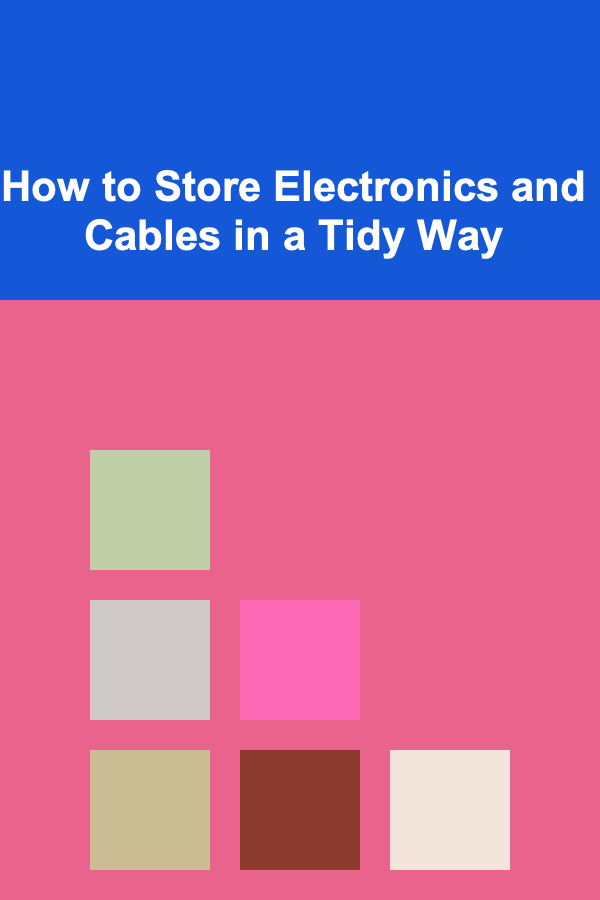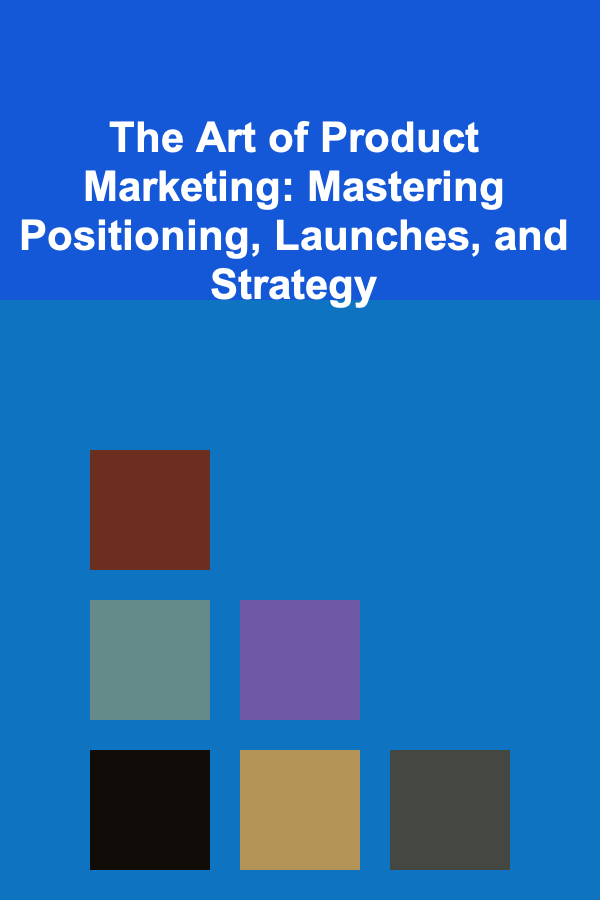
How To Write a Compelling Call to Action
ebook include PDF & Audio bundle (Micro Guide)
$12.99$10.99
Limited Time Offer! Order within the next:

A call to action (CTA) is one of the most critical elements of any marketing piece. Whether you're writing an email, a landing page, or a social media post, the effectiveness of your CTA can make or break the success of your efforts. In simple terms, a call to action is a prompt that encourages your audience to take a specific action. It could be anything from making a purchase, signing up for a newsletter, or downloading an eBook. Writing a compelling CTA is an art that requires understanding your audience, clarity in messaging, and the right emotional triggers.
In this article, we'll explore how to write a call to action that grabs attention, drives engagement, and ultimately delivers results. We'll break down the steps involved, provide examples, and discuss some key strategies that will help you craft CTAs that are not only compelling but also effective.
The Importance of a Call to Action
Before diving into how to craft a compelling CTA, let's first discuss why it's so crucial. A CTA acts as the bridge between your audience and your business goals. Without a strong call to action, even the best-written content or design can leave your audience wondering what to do next. It's the catalyst that drives the conversion process.
A compelling CTA:
- Directs your audience: It tells your visitors exactly what they should do next, eliminating any confusion or hesitation.
- Creates urgency: A good CTA leverages urgency to push the audience into taking immediate action.
- Motivates conversions: The right CTA can turn a casual reader into a customer, lead, or follower.
- Enhances user experience: When you make it clear how people can engage with your content, you're offering them a clear path to fulfill their needs.
With the stakes so high, it's important to understand how to craft a CTA that speaks directly to your audience and nudges them towards action.
Steps for Writing a Compelling Call to Action
1. Know Your Audience
To write a compelling CTA, you first need to understand who you're speaking to. Your audience's pain points, desires, and motivations should shape the CTA's tone, language, and content. Here's how you can get to know your audience better:
- Create buyer personas: These are detailed descriptions of your ideal customers. They include demographics, interests, challenges, and goals. Knowing your buyer personas helps you write CTAs that speak directly to their needs.
- Use customer feedback: Direct feedback from your audience, whether through surveys, reviews, or social media comments, can reveal what they care about most. Use this information to make your CTAs more targeted.
- Analyze competitor CTAs: Check how your competitors craft their CTAs and analyze what works or what doesn't. This can give you valuable insights into how your audience responds to different approaches.
Once you understand your audience, you can write CTAs that are more personalized and relevant to them. Personalization makes your CTA more likely to resonate and generate engagement.
2. Be Clear and Concise
A common mistake many marketers make is overcomplicating their CTA. Remember, simplicity is key. A CTA should be direct and clear, with no ambiguity about what action the audience should take. If the CTA requires effort to understand, you risk losing the audience's attention.
For example:
- Instead of saying "Explore all the various features of our service," you could say "Start your free trial now."
- Instead of "Get access to exclusive content and more," you could say "Download your free eBook today."
Clear and concise CTAs let your audience know immediately what they're supposed to do and what they'll get in return. The more straightforward, the better.
3. Use Action-Oriented Language
Your CTA should be action-oriented, using strong, compelling verbs that encourage immediate action. Words like "download," "subscribe," "buy," "join," "claim," and "get started" convey a sense of urgency and motivation.
For example:
- "Get Started Today" vs. "Learn More" -- "Get Started" is much more action-oriented and has a stronger call to engage.
- "Claim Your Free Trial" vs. "Sign Up" -- "Claim" adds a sense of exclusivity and urgency.
Action-oriented verbs stir the audience into immediate action, helping to overcome any potential hesitation.
4. Create a Sense of Urgency or Scarcity
A good CTA often includes a sense of urgency or scarcity to encourage immediate action. When people feel like they might miss out on something, they're more likely to act quickly. Creating urgency can take several forms:
- Limited time offers: "Offer ends in 24 hours!"
- Limited availability: "Only 5 spots left!"
- Time-sensitive discounts: "Save 30% when you sign up today!"
Urgency and scarcity tap into people's fear of missing out (FOMO), prompting them to act sooner rather than later. These elements work especially well when combined with a compelling offer or benefit.
5. Highlight the Benefit
Your CTA should not only tell the audience what to do but also highlight the benefits they'll receive. People are more likely to act when they understand what's in it for them.
For example:
- Instead of saying "Subscribe to our newsletter," you could say "Subscribe and get exclusive tips straight to your inbox."
- Instead of "Download our guide," you could say "Download the guide and learn how to grow your business in 30 days."
By emphasizing the value your audience will gain, you make the CTA more compelling and increase the likelihood of a conversion.
6. Make it Stand Out Visually
Your CTA needs to grab attention visually. If your CTA is buried in a sea of text or blends into the background, it's unlikely to be noticed. Consider the following design elements:
- Button vs. Text Link: A CTA button is often more effective than a text link because it's more noticeable and clickable.
- Contrasting Colors: Use contrasting colors to make your CTA stand out from the rest of the content. A brightly colored button on a neutral background draws the eye and encourages action.
- Size and Placement: Ensure your CTA is large enough to stand out and placed where it's easy to find. The ideal placement is usually above the fold (visible without scrolling), but you can also experiment with placing CTAs at the end of blog posts or in pop-ups.
The visual design of your CTA should make it easy for your audience to see and interact with it.
7. Test and Optimize Your CTAs
Even after you've written a compelling CTA, you can still improve its effectiveness. A/B testing is the process of comparing two versions of a CTA to see which performs better. This testing can help you optimize your messaging, design, and placement for maximum conversions.
Some elements to test include:
- Text variations: Try different wording to see what resonates best with your audience.
- Colors and designs: Test various button colors, sizes, and designs to see which ones drive more clicks.
- Placement: Experiment with where you place your CTA on your page, whether it's at the top, middle, or end.
Continuous testing and optimization allow you to refine your CTAs over time and boost performance.
8. Use Social Proof (When Relevant)
Social proof refers to the concept that people are more likely to take an action if they see others doing the same. Adding elements of social proof to your CTA can increase its effectiveness.
For example:
- "Join 10,000+ other happy customers."
- "See why 1,000 people rated us 5 stars."
These types of statements create trust and make people more comfortable taking the next step because they see others have already done so.
9. Be Authentic
Authenticity plays a huge role in the success of your CTA. If your CTA sounds too pushy, fake, or generic, your audience will tune it out. It's important to use a tone and voice that aligns with your brand and resonates with your audience.
For instance, if you're a brand known for being playful and informal, you could use a CTA like "Let's make it happen!" instead of something overly formal like "Please sign up now."
Being authentic helps you build a connection with your audience, which increases the chances that they'll engage with your CTA.
10. Keep it Mobile-Friendly
More and more people are browsing the internet and making purchases on mobile devices. Make sure that your CTA is optimized for mobile screens. It should be easy to click on, visible without having to zoom in, and appropriately sized for smaller screens.
Conclusion
Writing a compelling call to action is both an art and a science. It requires understanding your audience, crafting clear and persuasive language, creating urgency, and optimizing for design and placement. When done right, a CTA can drive engagement, boost conversions, and help you meet your business goals.
Remember, the most effective CTAs are the ones that guide your audience toward taking action in a way that feels natural, valuable, and urgent. By following the strategies outlined in this article, you can write CTAs that not only grab attention but also inspire action.

How to Choose the Right Financial Tools and Apps for Your Needs
Read More
How to Choose the Right Pendant Lighting for Your Kitchen Island
Read More
How To Cook Healthy Meals in Airbnbs and Hostels
Read More
How to Create an Efficient System for Grocery Shopping
Read More
How to Store Electronics and Cables in a Tidy Way
Read More
The Art of Product Marketing: Mastering Positioning, Launches, and Strategy
Read MoreOther Products

How to Choose the Right Financial Tools and Apps for Your Needs
Read More
How to Choose the Right Pendant Lighting for Your Kitchen Island
Read More
How To Cook Healthy Meals in Airbnbs and Hostels
Read More
How to Create an Efficient System for Grocery Shopping
Read More
How to Store Electronics and Cables in a Tidy Way
Read More